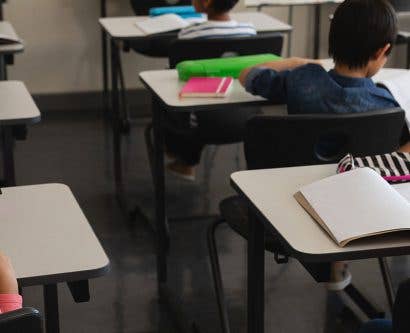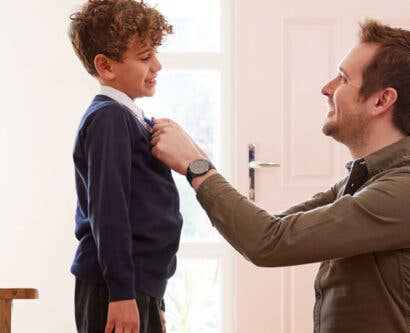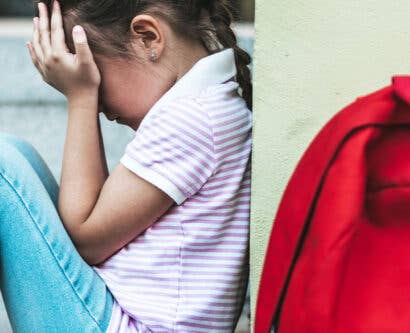How to Deal With Bullying at School
Bullying in school is a complex issue, and one that sadly impacts many children. In the last 12 months, 40% of young people were reported to be bullied, with 6% experiencing bullying every day.
The impacts of bullying can be severe, and are highly likely to affect a child’s ability to attend school and engage in learning. This is evidenced by statistics, with 21% of children who had experienced bullying daily having truancy in the last year. Because of this, bullying is not something we should accept as a nearly inevitable, if unfortunate, childhood experience. Instead, it’s important to know how to spot the signs of bullying and understand how to help a child who may be experiencing this.
In this article, we will explain what bullying is in school, how to spot the signs of bullying amongst young people, and provide our expert tips on how to prevent bullying in schools as well as how to deal with bullying if it is occurring.
What is Bullying in School?
Whilst there is no legal definition of bullying, it is often described as repeated behaviour that is intended to hurt someone either physically or emotionally. Whilst bullying can be targeted at random, it is often aimed at certain groups, such as a specific race, religion, gender, or sexual orientation. Often, bullying is said to involve an imbalance of power, and it can happen either face-to-face or online.
Furthermore, bullying can be performed by either an individual or a group, and can also be targeted at an individual or group as well.
Why do students bully others?
Bullying in school most often involves child-on-child abuse, where one pupil is bullying another. There are a myriad of reasons why this might occur, but some of the most common reasons why children may bully can be found below:
- Wanting to dominate others or improve their ‘social status’.
- Experiencing low self esteem and wanting to feel better about themselves.
- Having little or no remorse or failing to recognise the impacts of their behaviour.
- Feeling angry, frustrated, or jealous.
- Being the victim of bullying themself and wanting to ‘flip the script’.

Types of Bullying at School
Whilst physical bullying is the most obvious form, bullying does not need to be physical in order to be aggressive and hurtful. Any behaviour that aims to offend, degrade, or damage someone counts as bullying. However, as bullying can take so many forms, it can sometimes be difficult to identify.
The most common forms of bullying to watch out for include:
Physical Bullying
This type of bullying at school aims to cause harm to another child’s body or property. It can involve kicking, hitting, stealing, spitting, and damaging property. Whilst this form of bullying can cause physical wounds, it can be psychologically damaging as well.
Verbal Bullying
Verbal bullying specifically uses words to try and hurt another child. Whether this is in the form of name-calling, mocking, slurs, threatening someone, or sexual harassment, the impact of words on someone’s wellbeing should not be underestimated.
Social Bullying
One of the more difficult types of bullying to identify, social bullying is the act of isolating someone, excluding them from friendship groups, ignoring them and getting others to ignore them too, spreading vicious rumours and gossip, and generally damaging reputations and friendships.
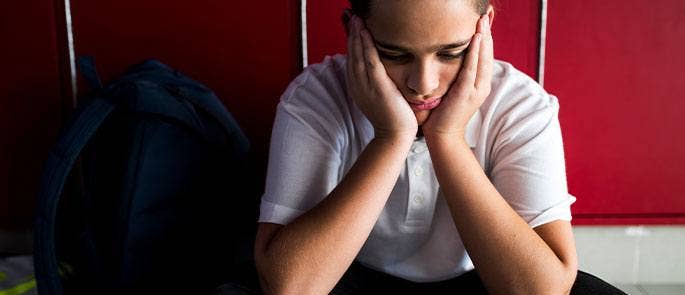
Cyberbullying
Cyberbullying is the easiest form of bullying to do anonymously, as it all takes place via the internet where identities can be easily hidden. Cyberbullying takes place via text, email, or social media, where these online tools are used to threaten, harass, embarrass or socially exclude another individual.
Learn more about this form of bullying in our article on Why is Cyberbullying Harmful and What Actions Can You Take?
Racial or Religious Bullying
This form of bullying involves treating someone badly due to their ethnic or religious background. This may include making damaging comments about this part of another child’s identity, using offensive slurs, or making inappropriate jokes based on race or religion.
Sexual Bullying
Sexual bullying can involve either isolating someone or treating them unequally due to their sex, or treating someone in a sexual way that makes them feel uncomfortable, particularly by making physical or verbal sexual advances. This form of bullying may also include making crude comments about someone’s sexual behaviour, spreading a sexual rumour, or abusing someone as a result of their sexual orientation.
Sexual bullying may also include sextortion, a type of financially-motivated online blackmail involving the non-consensual sharing of ‘nudes’ or ‘semi-nude’ photos and videos in exchange for money. To learn more, read our full article on What You Need to Know About Sextortion.
Disability Bullying
Unfortunately, children can sometimes be targeted because of their disabilities. A bully may treat someone badly, leave them out of activities or friendship groups, make cruel jokes or physically hurt or embarrass someone due to their disability.
Allergy Bullying
Allergy bullying occurs when a child with an allergy is bullied because they have an allergy to something. As many as 32% of children have reported being bullied due to having a food allergy at least once. This can range from mean comments and teasing, to an allergic child being physically threatened with or tricked into handling or eating their allergen.

Find out more about what this form of bullying involves and how you can prevent it in our article on How to Spot Allergy Bullying.
Signs of Bullying at School
Children may find talking to adults about bullying difficult, so it’s important that teachers and parents are able to spot the signs of bullying themselves and know when to step in. Whether that’s spotting that a child is being victimised, or that they’re using power aggressively, being able to identify both sides of bullying is crucial to dealing with it.
Signs That a Child is Being Bullied
- Afraid to go to school.
- Appears anxious or fearful.
- Low self-esteem.
- Complaints of feeling unwell (e.g. stomach sickness or headaches).
- Lower performance in school.
- ‘Losing’ their possessions, needing extra money, or reports being hungry more often than normal.
- Injuries, bruising, or damaged clothing.
- Seems unhappy or irritable.
- Trouble sleeping or frequent nightmares.
- Isolating themselves from friends and family.
Signs That a Child May be Bullying Others
- Aggressive behaviour towards parents, teachers, siblings or pets.
- Lack of empathy and low concern for others feelings.
- Bossy and manipulative behaviour.
- Unexplained gain in objects or money.
- Secretive about possessions or activities.
- Easily frustrated and quick to anger.
- Doesn’t recognise the impact of their actions.
Want to Learn More?
Our CPD Courses for Teaching and Education are written by industry professionals and cover a wide range of subjects relevant to bullying, such as Child Mental Health and Challenging Behaviour Training.
How to Prevent Bullying in Schools
Considering the staggering number of students reported to be being bullied at any one time, it’s vital that schools take proactive steps to prevent bullying from occurring in their classrooms. The first step in preventing bullying is to clearly define what your school considers to be ‘bullying’ so that it’s completely clear to both students and staff what types of behaviour won’t be tolerated.

Once you have clearly outlined your definition of bullying in school, you can use the following strategies to try and prevent it.
Teach Kindness and Empathy
Students who are open minded and able to step into other people’s shoes to see things from their perspective are less likely to bully. Thus, it’s important to promote social-emotional learning from a young age to try and instil these positive sentiments into students. One of the main ways in which a teacher can do this is to help children understand and appreciate a range of identities and backgrounds. Empathy is a skill that can be learnt and developed, and the classroom is the perfect place to facilitate this. This can occur in lessons, through dedicated events, or via assemblies.
Foster a Sense of Community
Bullying often feeds off of, or creates, a sense of isolation for individuals or groups, so countering this by creating numerous opportunities for connection can go a long way to preventing bullying. In a classroom with a strong sense of community, students are more likely to advocate for themselves as well as other students, by speaking out against bullying and supporting anyone going through hardship. To help foster this community, encourage students to participate in group activities, particularly extra-curricular ones, and ensure the classroom feels like a safe space.
Create a Behaviour Management Policy
A lack of consistency in how you approach bad behaviour can create real difficulties in handling it as students may think they can get away with poor actions if consequences aren’t always enforced. A solution to this is to have an effective, comprehensive behaviour management policy that is always followed. A school behaviour management policy is a document that clearly outlines what is expected of students and how school staff should handle behavioural incidents, including what rewards and consequences will be used to enforce this.
You can learn more about what a behavioural management policy is, as well as what should be included, in our article on Creating a School Behaviour Management Policy.
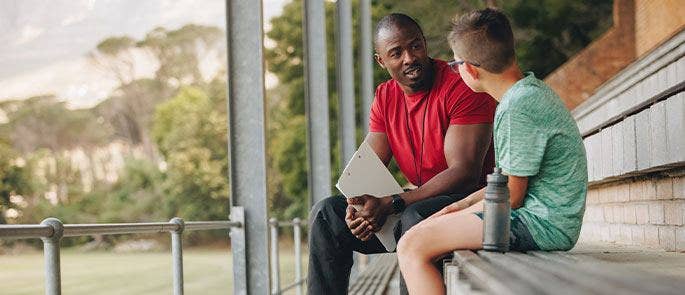
Ensure Students Know About Healthy Relationships
Children who aren’t able to recognise when they’re being taken advantage of or abused are far more likely to fall victim to bullying, so it’s vital that your students understand what a healthy or unhealthy relationship looks like, can recognise warning signs, and know how to enforce personal boundaries. Teaching healthy relationship skills could involve talking about boundaries, learning to communicate effectively, debunking stereotypes, and ensuring they know how to report any concerns.
You can get a more in depth insight into this topic by reading our full article on How to Teach Children About Healthy Relationships.
Reward Positive Behaviour
It’s easy to point out when a student does something bad, but reinforcing good behaviour despite it being expected can make a huge impact on children. Rewarding a child for doing something praiseworthy, even if it’s a small act, helps to provide clear expectations of what you want from students in a positive way. Reinforcing good behaviour can help to reduce bullying by helping students to become more receptive to positive actions and less likely to engage in negative ones.
Tips for Dealing With Bullying
Although there are many actions you can take to help prevent bullying in your school, this doesn’t mean that bullying will never occur. Thus, it’s important to always keep an eye out for signs of bullying in school and be ready to take action when necessary.
If an incidence of bullying does occur in your classroom, you can use the following tips to help deal with the situation kindly and effectively.
Take the Incident Seriously
It can sometimes be difficult to differentiate between bullying behaviour and everyday fall-outs between children. Despite this, it’s important to take every report of bullying seriously so that nothing slips through the net, and so that students always feel confident that they can confide in you and be heard. This is where having a clear definition of bullying comes in handy, so that you can identify the right actions to take in response to the scenario.
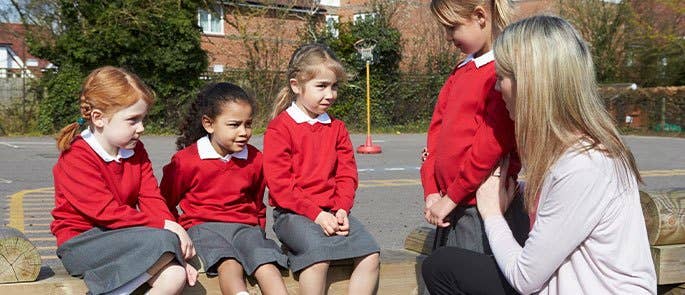
Keep a Record of Actions and Incidences
It’s strongly recommended that schools have a reporting system in place that can efficiently record every incident of bullying behaviour and what was done to resolve this. This helps to keep track of any repeated incidents so that it’s easier to know when further action is needed and ensures that you can correctly communicate everything that has occurred to a parent or your superiors.
Supporting All Students Involved in Bullying
Once you’ve identified an incidence of bullying, you should aim to work with both the victim and the bully to really understand why the situation has occurred and what the needs of each student involved are. Whilst it’s crucial to safeguard the victim of bullying, you should also aim to change the behaviour of the aggressor too, which takes an understanding of their motivation.
Unfortunately, children don’t always want to willingly talk about their feelings or concerns. This can be for many reasons, such as not understanding what’s happening, feeling guilty or embarrassed, worrying they won’t be believed, or being afraid of the consequences of speaking up. Thus, it’s important that you create a safe space to share and are willing to act on observed evidence if needed.
To learn more about why children may be reluctant to speak about their experience with bullying, read our article on Understanding Why Children May Stay Quiet About Abuse.
Communicate With a Child’s Parents/Caregivers
A parent will know and understand their child better than anyone, so can be extremely helpful in helping you to understand the cause, impact, and potential solutions for an incident of bullying. Keeping a regular and open line of communication with parents of any children involved in bullying is likely to result in resolving the situation far quicker and more effectively. Ensure you keep them up to date with all your records so that they’re fully informed and can also share any of their observances with you. With both parties fully aware of what’s happening, you can aim to provide the correct support both at home and in school.
Communicating with Parents
If you’d like to find guidance on how schools can communicate with parents more effectively, take a look at our article on Promoting Effective Communication with Parents in Education.
Unfortunately, bullying is a common occurrence in schools but this doesn’t mean it should be accepted. It’s vital that all school staff are aware of the signs of bullying and know how to respond to it. There are many forms of bullying, some of which are easier to identify than others, so it’s important to research every variety and know how they differ. Ultimately, schools should work to prevent bullying before it occurs, but it’s also recommended to have tools in place to effectively react to cases of bullying when they do occur.
Further Resources:
- Why is Cyberbullying Harmful and What Actions Can You Take?
- How to Teach Children About Healthy Relationships
- CPD Courses for Teaching and Education








